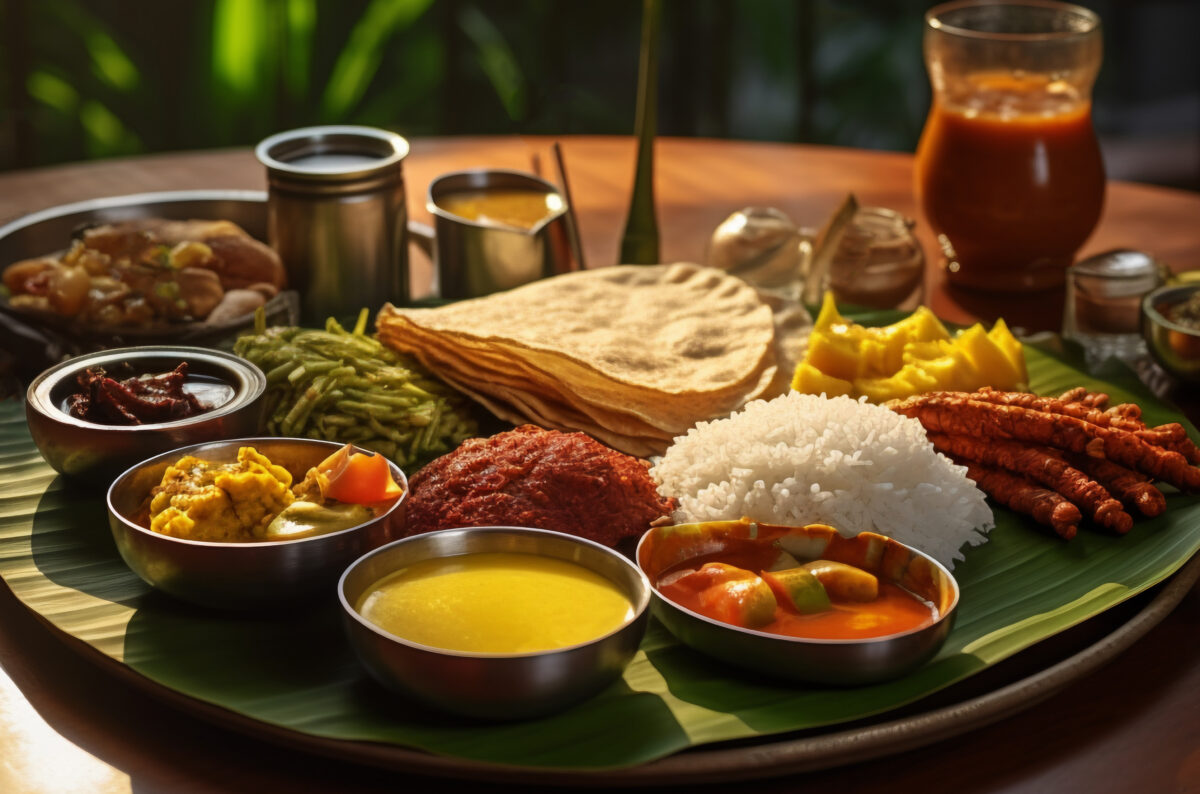
- August 1, 2025
How to Grow Restaurant Business: Proven Tips for Sustainable and Scalable Growth
In the fast-evolving world of food and hospitality, understanding exactly how to grow restaurant business is more critical than ever. Whether you’re operating a single-location family eatery or managing a chain of outlets, growth doesn’t happen by chance. It’s the result of strategic planning, consistent branding, customer experience enhancement, and timely innovation.
This guide offers clear, actionable insights on how to grow restaurant business using a mix of traditional and modern techniques. From attracting new customers and increasing footfall to improving customer retention and deploying expansion strategies, everything here is designed to help you thrive in today’s highly competitive market.
If you’ve been asking yourself how to grow restaurant business effectively without compromising quality, culture, or profitability — this article gives you the answers. Let’s dive in.
Laying the Foundation for Growth
Before diving into digital tools or advertising tricks, start with the basics. Knowing your restaurant inside out is the first step toward figuring out how to grow restaurant business in a sustainable way.
Understand Your Brand Identity
- Identify your core mission, values, and what makes your food different.
- Define your target audience clearly—are they families, students, professionals, or travelers?
- Create a brand voice and tone that reflect your cuisine and cultural roots.
A restaurant like Mysore Aduge has successfully grown by staying rooted in its cultural identity—pure vegetarian South Indian food—while modernizing the dining experience. This combination of authenticity and strategy is a great example of how to grow restaurant business using branding.
The South Indian traditional food you serve should reflect in your brand story, visual identity, and customer experience.
Set Clear and Achievable Growth Goals
Setting goals helps measure success and stay accountable. Here are the key areas to track:
- Financial goals: Monthly revenue, profit margins, and average bill size.
- Operational goals: Reduce food waste, speed up service, or improve inventory accuracy.
- Customer-focused goals: Increase repeat visits, boost satisfaction scores, or expand delivery radius.
Tracking progress in these areas will provide clarity on how to grow restaurant business and pinpoint where improvements are needed. If you’re interested in exploring business viability, the article on most profitable franchise in India is a great resource.
Attracting New Customers
Gaining new patrons is at the core of any successful growth strategy. But it’s not about gimmicks or flash sales. Sustainable growth requires long-term visibility and engagement.
Attracting diners consistently is one of the hardest parts of running a restaurant. Consider expanding reach by establishing your presence in food hubs like:
- South Indian restaurants in Ahmedabad
- South Indian restaurants in Mumbai
- South Indian restaurants in Delhi
- South Indian restaurants in Vadodara
- South Indian restaurants in Jaipur
Use region-specific keywords to enhance SEO performance and discoverability in Google Maps and search.
Optimize for Local SEO
Your restaurant should appear whenever someone in your area searches for terms like “best South Indian restaurant near me.” Here’s how to ensure visibility:
- Claim and update your Google Business Profile with accurate details.
- Use local keywords in your website and social media content.
- Encourage satisfied customers to leave positive reviews.
- Post regularly using high-quality images of your dishes and restaurant interior.
Mastering local SEO is one of the most cost-effective ways on how to grow restaurant business organically.
Build a Conversion-Focused Website
Today’s diners often check a restaurant online before visiting. Your website should:
- Be mobile-optimized for seamless browsing.
- Feature your menu, photos, hours, and contact info clearly.
- Include an easy-to-use online ordering or reservation system.
- Integrate with delivery platforms like Swiggy and Zomato.
A great website isn’t optional—it’s an essential component of how to grow restaurant business and build credibility.
Leverage Social Media to Build Community
Social media isn’t just about promotions—it’s about storytelling. Here’s how to make the most of it:
- Share behind-the-scenes kitchen content to show authenticity.
- Highlight your team and their connection to the cuisine.
- Promote seasonal dishes and festival specials.
- Engage with customers through comments, DMs, and shares.
Social media presence is a powerful tool in how to grow restaurant business while building an emotional connection with your audience.
Improving Customer Retention
Attracting a customer costs far more than retaining one. Long-term success lies in converting first-time diners into loyal fans.
Create Memorable Customer Experiences
Focus on delivering consistency in:
- Food quality and taste.
- Service speed and friendliness.
- Ambience and cleanliness.
- Post-meal engagement like thank-you messages or feedback requests.
The more memorable the dining experience, the higher your chances of customer retention—an essential part of how to grow restaurant business sustainably.
Reward Loyalty and Encourage Referrals
Encourage customers to return and refer friends:
- Offer loyalty programs with rewards after multiple visits.
- Give small perks like a complimentary dessert to regulars.
- Launch referral discounts or group dining benefits.
- Use SMS and email marketing to stay in touch with regular patrons.
Customer retention is one of the smartest strategies when exploring how to grow restaurant business long-term.
Expansion Strategies for Long-Term Success
When your core business is stable, it’s time to think about scaling. Here are some proven expansion strategies that many successful restaurateurs follow.
Explore Virtual Brands or New Cuisine Lines
Maximize your existing kitchen setup by offering:
- Specialty snack brands that only exist online.
- Niche offerings like millet meals or health-focused boxes.
- Festival-specific pop-up menus that rotate seasonally.
This approach allows experimentation without the cost of a new location—a smart move in understanding how to grow restaurant business innovatively.
Host Events and Community Engagement Campaigns
Building local goodwill increases loyalty and trust:
- Organize themed food events during festivals like Ugadi or Pongal.
- Conduct community cooking classes or invite influencers.
- Participate in local food fairs and cultural fests.
Community involvement isn’t just good PR—it’s a powerful way to expand visibility and understand how to grow restaurant business through word of mouth.
Franchise or Open Additional Outlets
Once your model is refined, consider expanding physically:
- Develop a replicable model with standard operating procedures.
- Choose locations based on traffic, demand, and competition.
- Provide comprehensive training and support to franchisees.
- Maintain consistency across all outlets.
Franchising is among the most rewarding yet challenging methods of how to grow restaurant business. Done right, it can skyrocket your reach.
Integrate Offline and Online Marketing
To reach a wider audience, blend traditional marketing with digital strategy.
- Distribute flyers with QR codes linking to your website or menu.
- Sponsor cultural or temple events in your community.
- Run limited-time radio ads to build recognition among older audiences.
- Add branding elements to packaging like logos and social handles.
Combining old-school outreach with online convenience is a balanced and effective approach to how to grow restaurant business across demographics.
Monitor, Adapt, and Evolve
Business is dynamic. The only constant is change. If you want to master how to grow restaurant business, you must stay flexible and responsive.
Track Key Performance Metrics
Make data-driven decisions by monitoring:
- Customer footfall and order frequency.
- Dish popularity and menu performance.
- Promotion effectiveness and online traffic trends.
- Customer satisfaction ratings and feedback logs.
Regular audits ensure you’re always improving.
Embrace Innovation Based on Trends
The modern diner expects novelty and tech-forward service:
- Update your menu with vegan or gluten-free options.
- Offer contactless menus and payment solutions.
- Automate feedback collection through QR codes.
Growth requires constant evolution. Knowing how to grow restaurant business means staying one step ahead of the market.
Conclusion
The path to restaurant growth is not a straight line. It’s a process of learning, experimenting, adapting, and staying true to your core values. Whether you’re improving customer service, embracing digital trends, or launching new locations, remember that every small change adds up over time.
If you’re serious about learning how to grow restaurant business, start by applying just one or two strategies from this guide and track the impact. Stay consistent, stay passionate, and growth will follow.
Ready to turn your love for South Indian vegetarian cuisine into a flourishing business?
Join the Mysore Aduge family and open your own outlet today. With expert training, proven systems, and full support, we make it easy to grow with purpose.
MysoreAduge invites entrepreneurs to explore its trusted veg restaurant franchise in India, offering proven systems and authentic vegetarian Karnataka flavors to help new ventures flourish. Meanwhile, food lovers across the country can experience the best of South Indian cuisine at its highly-rated South Indian restaurants, where dosas, idlis, vadas, and traditional hospitality come together for a genuinely satisfying dining experience.
Frequently Asked Questions
Focus on combining cultural authenticity with modern tools like digital marketing, customer feedback systems, and online ordering. Local partnerships and community engagement are especially powerful in India.
Local SEO and social media marketing offer high returns with low cost. Regularly update your Google profile and post engaging content on Instagram and Facebook.
A clear and consistent brand builds trust and loyalty, which directly impacts repeat business and referrals.
Absolutely. Even basic tech like mobile ordering, payment apps, and feedback forms can dramatically improve operations and customer satisfaction.
Once your current location is profitable, has repeat customers, and operates smoothly without you needing to be there constantly.
Focus on service consistency, personalized experience, and loyalty rewards. Communicate often through SMS and email campaigns.
High brand recall, consistent profits, standardized recipes, and well-documented operations are key indicators.







